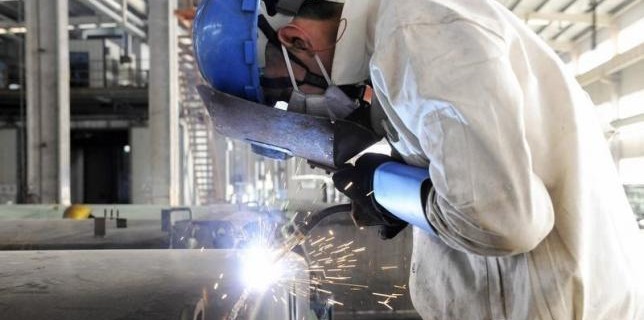Industrial production down by 0.9% in euro area

In December 2018 compared with November 2018, seasonally adjusted industrial production fell by 0.9% in the euro area (EA19) and by 0.5% in the EU28, according to estimates from Eurostat, the statistical office of the European Union. In November 2018, industrial production fell by 1.7% in the euro area and by 1.2% in the EU28.
In December 2018 compared with December 2017, industrial production decreased by 4.2% in the euro area andby 2.7% in the EU28.
The average industrial production for the year 2018, compared with 2017, rose by 1.1% in the euro area and by1.3% in the EU28.
Monthly comparison by main industrial grouping and by Member State
In the euro area in December 2018, compared with November 2018, production of both capital goods and nondurable consumer goods fell by 1.5% and energy by 0.4%, while production of intermediate goods remained unchanged and durable consumer goods rose by 0.7%.
In the EU28, production of capital goods fell by 1.2% and non-durable consumer goods by 0.2%, while production of intermediate goods remained unchanged, energy rose by 0.4% and durable consumer goods by 0.1%.
Among Member States for which data are available, the largest decreases in industrial production were registered in Ireland (-13.4%), Malta (-5.2%) and the Netherlands (-3.2%). The highest increases were observed in Denmark (+11.6%), Luxembourg (+3.5%) and Latvia (+3.3%).
Annual comparison by main industrial grouping and by Member State
In the euro area in December 2018, compared with December 2017, production of capital goods fell by 5.5%, durable consumer goods by 4.4%, energy by 4.2%, intermediate goods by 4.0% and non-durable consumer goods by 1.8%.
In the EU28, production of capital goods fell by 4.2%, intermediate goods by 3.2%, durable consumer goods by2.9%, energy by 1.5% and non-durable consumer goods by 0.2%.
Among Member States for which data are available, the largest decreases in industrial production were registered in Ireland (-19.8%), Spain (-6.7%) and Croatia (-6.6%). The highest increases were observed in Denmark (+14.3%), Hungary (+5.8%) and Estonia (+5.7%).
Geographical information
The euro area (EA19) includes Belgium, Germany, Estonia, Ireland, Greece, Spain, France, Italy, Cyprus, Latvia, Lithuania, Luxembourg, Malta, the Netherlands, Austria, Portugal, Slovenia, Slovakia and Finland. The European Union (EU28) includes Belgium, Bulgaria, Czechia, Denmark, Germany, Estonia, Ireland, Greece, Spain, France, Croatia, Italy, Cyprus, Latvia, Lithuania, Luxembourg, Hungary, Malta, the Netherlands, Austria, Poland, Portugal, Romania, Slovenia, Slovakia, Finland, Sweden and the United Kingdom.
Methods and definitions
The index of industrial production measures the evolution of the volume of production for industry excluding construction, based on data adjusted for calendar and seasonal effects. Seasonally adjusted euro area and EU series are calculated by aggregating the seasonally adjusted national data. Eurostat carries out the seasonal adjustment of the data for those countries that do not adjust their data for seasonal effects. Total industry covers NACE rev.2 sections B to D. Missing observations from Member States for recent months are estimated for the calculation of the euro area and the EU aggregates.
Revisions and timetable
Compared with data issued in the News Release 8/2019 of 14 January 2019, the monthly percentage change for November 2018 remains unchanged at -1.7% in the euro area and has been revised from -1.3% to -1.2% in the EU28. The annual percentage change has been revised from -3.3% to -3.0% in the euro area and from -2.2% to -1.9% in the EU28.
Source: Eurostat





























